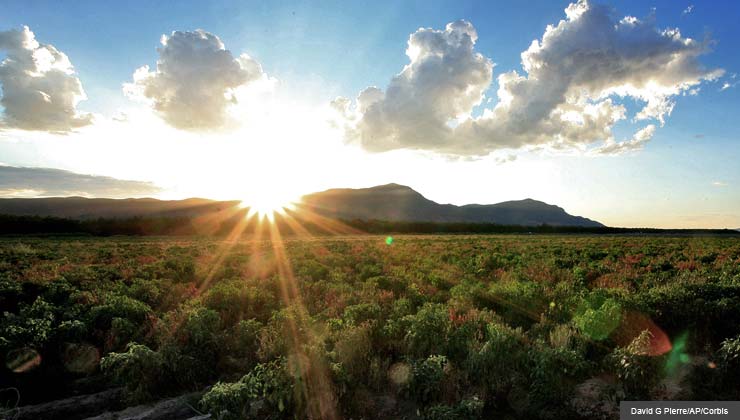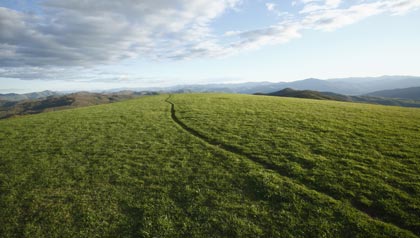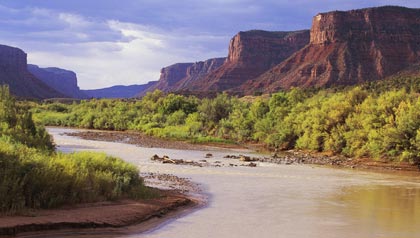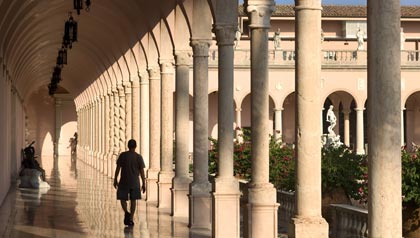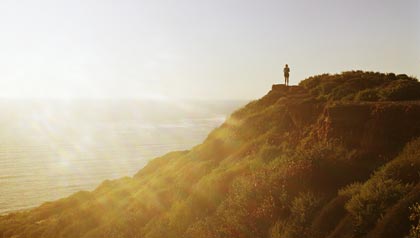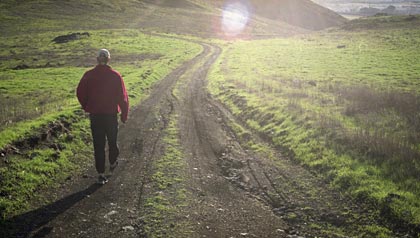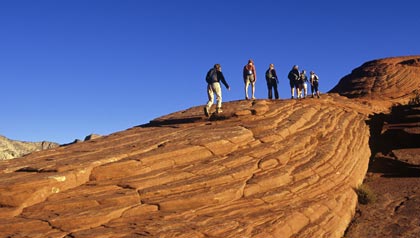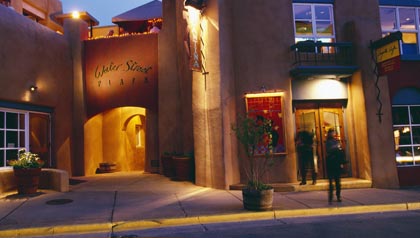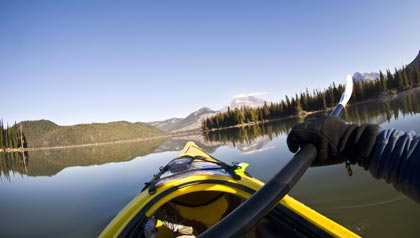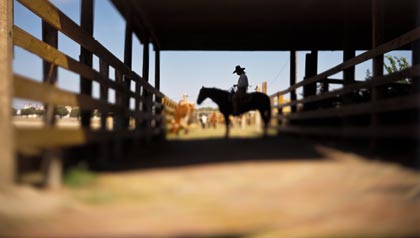10 Great Sunny Places to Retire
If bright skies and warm temperatures are on your must-have list, these cities fit the bill
En español | Not everyone envisions retiring to a warm, sunny locale. But a whole lot of us do, and the good news is that there are plenty of attractive options — so many, in fact, that it can be hard to decide where to head for the next chapter of life.
To help you with that decision, AARP canvassed the country and found 10 great places where the sun shines in abundance, clear skies accentuate the scenery and the sublime weather gets people outdoors to play — and to meet other like-minded retirees.
To make our list of great sunny places to retire, a town had to post at least 250 days a year that were either completely or partially cloudless.
We also sought places that had some draw besides the weather — a distinct cultural identity, a range of activities for retirees, proximity to top-tier outdoor attractions, etc.
And, as with all of our great-places-to-retire lists, we selected areas that met our livability criteria of low crime, robust economy, healthy lifestyle and recreational amenities.
So grab a pair of shades, slather on the high-grade SPF and read on to figure out which of these sun-kissed towns best fits with your retirement goals and dreams.
Asheville, North Carolina
Asheville has changed significantly since its heyday as a summer retreat for wealthy scions named Rockefeller and Vanderbilt. But it is still a serenely beautiful town in the Blue Ridge Mountains with some of the best early 20th-century architecture in the South. It's also a major center for the arts and for outdoor recreation, bolstered by glorious weather for much of the year.
Asheville was named the sixth-best place in the U.S. for business and careers by Forbes magazine a few years back, although more people tend to come here for the cultural offerings: Local artists pack into frequent crafts fairs and display their work in the city's Pack Square gallery district, which includes museums and the 500-seat Diana Wortham Theatre. Live music is on offer in many venues, including the venerable Orange Peel. The city has numerous independent bookstores, including the community epicenter Malaprop's.
The Asheville Symphony performs in the 2,300-seat Thomas Wolfe Auditorium.
Other attractions include the Biltmore Estate, a 19th-century mansion built by George Washington Vanderbilt, and the surrounding historic district. Architectural highlights downtown include the tile dome of St. Lawrence Church and the pink-roofed art deco city hall.
Drawbacks? The cost of living here is in the top one-quarter of all metros in the U.S. — fueled in large part by housing prices — while the median household income is in the bottom quarter.
See also: The 10 most affordable cities.
But the share of the population aged 65 and older is high, reflecting an influx of affluent retirees. UNC, Asheville has one of the largest lifelong learning centers in the country, accounting for about half the of the university's 3,400 students.
Take in the oft-sunny weather in Great Smoky Mountains National Park or seek serenity amid the pines of the Pisgah National Forest. The region is crisscrossed with hiking, mountain biking and equestrian trails. Local streams offer trout fishing and some, like the French Broad River, draw whitewater kayakers.
Asheville boasts several hospitals and ample doctors for a town its size. Mission Hospital has won awards for stroke care and also operates a research center. The area is also a Mecca for massage, acupuncture, herbal medicine and other alternative treatments. But sometimes the best medicine is just taking a long walk in the hills around town.
Grand Junction, Colorado
Grand Junction appears to have so much going for it that it even its tourism promoters don't know where to focus when listing the city's charms: Inspiring landscapes! Charming downtown! Outdoor adventures! Golfing paradise! Wine country!
See also: America's healthiest hometowns.
This is one of those cities that burst on to the scene over the past decade when people started tiring of urban hassles in Denver and Salt Lake City. And the exclamatory claims, for the most part, hold up.
Grand Junction, with a population of 58,444, sits in high desert between two phenomenal natural attractions: Colorado National Monument, west of town, is home to towering monoliths, vast plateaus and canyons. To the east, Grand Mesa, home to over 300 lakes, is one of the largest flat-top mountains in the world. It is part of a contiguous swath of almost 3.2 million acres of public land — the combined grandeur of Grand Mesa, Uncompahgre and Gunnison national forests.
Add to this Grand Junction's location at the confluence of the Colorado and Gunnison rivers, and the opportunities for outdoor activity could (and do!) fill guidebooks on their own. Hiking, biking, golf, rafting, kayaking, climbing, fishing, ice fishing, skiing — all are here, in abundance.
While at least one travel website has dubbed Grand Junction "a suburb without a city," the downtown area has a mellow Western charm and one of the nation's largest sidewalk sculpture galleries — almost 100 sculptures in all. Among the 189 restaurants are chains, fine-dining establishments, coffee houses and rocking bars and dance clubs. There's even a respectable collection of museums and performing arts venues, including the Avalon Theater (built in 1923), Grand Junction Symphony Orchestra and Museum of Western Colorado.
As for the wine, the Grand Valley is the fruit basket of Colorado and growers committed to the grape produce a lot of merlot, cabernet sauvignon and syrah, although other varietals are represented as well. The wine-a-palooza peaks every year at the Colorado Mountain Winefest in Palisade, 10 miles east of Grand Junction.
The area has above average air and water quality, and has more physicians per capita than the U.S. average. Crime — violent and property — is above average, perhaps because of elevated drug and alcohol use by youth. Slow season is December through February. Summer can be hot (average July high temperature: 93 degrees) but usually only for a few weeks. Then it's back to all those great things the PR department — and many retirees — keep saying about Grand Junction.
Sarasota, Florida
If you've ever dreamed of retiring on the best beach in the U.S., now might be your chance: Siesta Beach, of the dozens of waterfront strands in and around Sarasota, earned the top beach in the U.S. honors from Dr. Beach for the white sands, crystal water and wide area for sunbathing, playing or people watching.
Sarasota, which sits south of Tampa on Florida's Gulf Coast, is beach-centric but there's more to this city of 52,025 people than simply embedding toes in sand.
See also: Ten best states for retirement.
Start with the arts scene, which includes a renowned Rubens collection at the Ringling Museum of Art, which is adjacent to John Ringling's Ca D'Zan Mansion, an impressive, if somewhat gaudy, homage to Venetian Gothic architecture. Sarasota also has its own opera house, ballet company, symphony orchestra and multiple theaters, all in a modern downtown surrounded by water.
The city's historic neighborhoods include Towles Court art district, which harbors colorful wooden homes, galleries, shops and restaurants. Main Street is ideal for walking — and popping in and out of quaint boutiques and restaurants, along with lively bars. Towles Court hosts regular art walks, featuring works of local artists.
For non-beach natural diversions, forge into Myakka River State Park, which offers hundreds of miles of hiking trails, campgrounds, cabin rentals and airboat tours. Wildlife here includes red-tailed hawks, otters, foxes and alligators. And for man-made diversions? Golf and tennis are big in Sarasota, with dozens of public and private courses and hundreds of tennis courts. For baseball fans, Ed Smith Stadium is the spring training headquarters of the Baltimore Orioles and home to a minor league franchise.
Sarasota was hit hard during the housing crash and is still recovering. Foreclosures are a big issue here, but that also means you might pick up a house at a steep discount. Unemployment is above the national average and most jobs are in retail, tourism and hospitality, and thus don't pay well. But prices of most goods and services are in line with incomes, thus the cost of living index is average.
Crime is above average here but most residents say they are happy living here, and most are fairly healthy: The obesity rate is below the national average (although the diabetes rate is slightly above average). While there's no science to prove it, good health and happiness may be linked to hanging around some of the world's best beaches every day.
San Diego, California
San Diegans like to say their beach town is smaller, friendlier and, well, just plain better than Los Angeles. True, in some respects, although San Diego is no small town: It's is the 17th-largest metropolitan area in the United States (approaching 3.1 million people) and borders two Mexican cities (Tijuana and Tecate) that add another 1.5 million.
See also: Best places to retire abroad.
As for sunny, San Diego boasts 146 completely clear days per year but has oodles of partly sunny days to complement average monthly high temperatures that float from the mid 60s in winter to the high 70s in summer.
San Diego County has miles of beaches, including Coronado Beach, which was recently named one of the 10 best in the country. The city is more orderly than L.A., perhaps due in part to San Diego's numerous major military facilities, including the country's largest complex of naval bases and the Marine Corps' Camp Pendleton.
The city layout also adds to the manageable feel: Western San Diego county is a mesa cut by deep canyons, and planners designated a lot of parks and open spaces that keep neighborhoods feeling small. Yet big-city resources abound, including a major university with a medical center and teaching hospital (University of California, San Diego); thriving industries in biotechnology, computer sciences and telecommunications; and dining, nightlife and entertainment to rival most other major cities. The city's Historic Gaslamp Quarter is home to 135 eating and drinking establishments, 70 shops, and more than a dozen hotels. The city has a growing art scene that shows off in monthly fairs like North Park Nights, and perhaps the best zoo in the world.
The city has more than 100 neighborhoods, ranging from ultra-exclusive beachside communities like La Jolla (known for its art galleries) and Coronado (recognized for its Victorian beach cottages) to more affordable places like Pacific Beach and East Village. To the east lie the Santa Ana Mountains and Mount Palomar. Anza-Borrego Desert State Park (600,000 acres) takes up most of the northeast part of the county, and the Cleveland National Forest (460,000 acres) occupies the county's center.
The bounty of outdoor recreation options contributes to San Diegans' low rates of diabetes, hypertension and cancer.
On the downside, unemployment is above the national average, and housing foreclosures are high. San Diego's biggest downside might be wildfires. A super-firestorm in October 2007 burned 369,000 acres in the county; half a million people were evacuated, and 1,600 homes were destroyed.
Las Cruces, New Mexico
With the motto "Stay Sunny" — and an average of 350 days a year of sunshine — Las Cruces beckons sun worshippers seeking a retirement locale.
Las Cruces has a small town feel. The four-month Full-Tilt Fiesta Season starts around Labor Day and has several peaks, including construction of the World's Largest Enchilada and the Day of the Dead on November 1.
AARP The Magazine named Las Cruces a "retirement dream town" several years back because of its affordability, weather and recreational resources. It has also been singled out by Hispanic magazine as a livable city for Hispanics.
Las Cruces (population 90,000) is 45 miles north of the Mexican border. Historic Mesilla (2,200), a former stagecoach junction where Billy the Kid was sentenced to hang, is five miles west of Las Cruces.
Unemployment is low — 6.3 percent in October 2011 — but many jobs pay poorly and more than one-fifth of residents live below the poverty line.
See also: The best places to live the simple life.
A big chunk of downtown Las Cruces was demolished in the 1960s — blame "urban renewal" — so the closest thing the town has to a center are the commercial strips along Telshor Boulevard and Lohman Avenue.
But there is hope: The city is home to New Mexico State University's main campus (NMSU, enrollment 16,200), which supports a fertile arts and music scene. COAS Books, which stocks half a million titles, holds frequent readings and book signings. The Las Cruces Symphony Orchestra, comprised mostly of NMSU students and faculty, performs at Music Center Recital Hall. In Mesilla, restaurants, shops and galleries line the Plaza, which is a National Historic Landmark, and the Fountain Theatre, the oldest theater in New Mexico, screens foreign and alternative films.
Locals also flock to the Wednesday and Saturday farmers' and crafts market, which dates to 1857, and on the last Sunday of each month, cyclists, walkers, joggers, dancers and even weight lifters pack Young Park to burn calories in a ciclovía.
Outside of town huge swaths of public land await: Las Cruces is at the junction of the Chihuahua and Sonora deserts, and the Rockies and Sierra Madre Mountains. The local office of the Bureau of Land Management maintains 45,000 miles of roads and trails that extend all the way to the Arizona border.
The number of doctors and hospital beds per resident is much lower than average but life expectancy is high. Something, no doubt, about all that sunshine.
San Luis Obispo, California
California's Central Coast often gets lost in the buzz over the state's big cities, and that's just fine with residents of San Luis Obispo, who are happy to keep this stretch of the Golden State to themselves.
See also: America's healthiest hometowns.
Set halfway between San Francisco and Los Angeles, San Luis Obispo County boasts miles of beaches, rolling vineyards (and wineries), historic Spanish missions, a burgeoning arts scene and sumptuous dining options. It's also home to Cal Poly (California Polytechnic State University – enrollment: 18,360), a major four-year state school whose students contribute to the relaxed vibe of the town.
San Luis Obispo was named one of the happiest cities in the world by author Dan Buettner in his book Thrive, due in part to a decades-old ban on drive-through restaurants, a near-universal public smoking ban and an emphasis on walking, cycling and commingling with others in the community. Examples include the weekly farmer's market, Thursday night community bike rides and numerous arts and culture festivals that bring locals into the streets around the two-block Mission Plaza in the center of town. SLO is a few miles from the beach but nearby towns — among them Morro Bay, Baywood-Los Osos and Grover Beach — sit right on the coast.
A number of impressive state parks dot the coast, including Pismo Dunes Natural Preserve, Morro Bay State Park and the ruggedly beautiful Montana de Oro State Park. Just inland from San Luis Obispo are the northern reaches of the massive Los Padres National Forest. Together the public lands support a dizzying variety of recreation, from sport fishing and mountain biking, to surfing, hiking, whale watching, climbing, kayaking, sailing, golfing and more.
Some 85 percent of SLO's 45,119 residents are white, so if you're seeking diversity this may not be the town for you. The local economy has rebounded well from the recession due in large part to the fact that Cal Poly and San Luis Obispo County are the two largest employers in the area.
The most famous landmark in San Luis Obispo — Hearst Castle — is but one of many cultural attractions. The whimsically designed Madonna Inn dates to 1958. The Big Fremont Theater, an art deco building erected in the 1940s, still features first-run movies. The San Luis Obispo International Film Festival is a major annual event that often brings top stars to town. And there's a doctor's office in town that was designed by Frank Lloyd Wright – a rare commercial design for him.
St. George, Utah
If you like open space, dry sunny air and can live without the sophistication of a major city, St. George is calling. Tourists come to revel in the stunning red-rock scenery at nearby Zion National Park, but most of the people who have settled here came from elsewhere in Utah: some 70 percent of residents belong to the Church of Jesus Christ of Latter-day Saints (LDS).
The city is in the southwest corner of Utah, 110 miles northeast of Las Vegas, in a part of the country renown for arid sunshine. Summers are hot, and winters are mild and usually snow-free.
See also: 6 great hikes in the U.S.
St. George (population 71,000) saw frenetic growth during the housing boom but has cooled significantly, and the hills are now dotted with foreclosed condos. But the city remains on the A-list for retirees seeking scenery and sunshine.
The heart of town is the 1877 LDS Temple, which dominates the city with its 175-foot, brilliant white building. You can't enter the temple if you aren't a Church member, but everyone is welcome at the equally impressive Tabernacle, completed in 1876. Its 2,000 panes of glass were shipped from New York and its clock came from London. The church's achievements are matched by its prohibitions: If you like fine wine, for example, be prepared to drive to Las Vegas, because there are only two state-owned liquor stores in the St. George area.
St. George boasts a decent menu of arts and culture, including the St. George Art Museum, a regional center for landscape photographers and visual artists. The Eccles Fine Arts Center also hosts plays, recitals and exhibits. And the 1,920-seat Tuacahn Amphitheatre in nearby Ivins mounts plays and touring acts.
Several first-rate golf courses have made St. George Utah's golf capital. For nature lovers, the city is within an hour's drive of Zion National Park. Bryce Canyon, Glen Canyon, and the north rim of the Grand Canyon are easy day trips. There's skiing at nearby Brian Head Resort, and several lakes big enough for boating and fishing.
Most of these places are set within Dixie National Forest, which covers nearly 2 million acres of southern Utah and is wide-open for hiking, biking and horseback riding.
St. George is extremely safe and healthy. And although the nearest big medical center is in Las Vegas, residents have long life expectancies, perhaps due to all that sunshine and clean living.
Santa Fe, New Mexico
Native American, Spanish, American — Santa Fe has been blending cultures since the town was settled 400 years ago. Today, it is also a magnet for art lovers, artists and retirees attracted by clear light, mountain scenery and creativity.
Santa Fe (population 73,000) is 55 miles northeast of Albuquerque in the foothills of the southern Rockies. Half of the metro area's population is Hispanic, some from families that have lived here 10 generations or more.
Santa Fe is an epicenter for painting and sculpture. There's also a local symphony, community orchestra, several chorales, the Santa Fe Opera, and annual festivals for chamber music, folk and bluegrass, alternative theater, and more. Santa Fe is also a big foodie scene: Trattoria Nostrani has won numerous awards, and others, including El Farol, employ innovative chefs. You'll find them browsing the Tuesday-and-Saturday farmer's market for native chilies, mountain apricots, biscochitos (New Mexico's traditional cookie) and more.
On Sundays, walk the craft stalls in front of the city's old plaza, next to the oldest public building in the U.S., the Palace of the Governors, built in the early 17th century. Or wander into the myriad shops, galleries, cafes and bars, or the 96,000-square-foot New Mexico History Museum — one of a dozen museums in Santa Fe. Gallery row along Canyon Road was named one of America's Great Streets by the American Planning Association.
For great-outdoors sunshine, hit the Sangre De Cristo Mountains, where you can walk or mountain bike for days in the national forests that surround the city. Need a hiking partner? Call the Trails of Santa Fe Stewardship Coalition. For skiing, hit Ski Santa Fe, just 16 miles from town, or drive 2.5 hours to the world-class steeps of Taos Ski Valley.
The local economy is mixed — very low unemployment but a growing population and high housing prices that have driven up the cost of living.
Santa Fe made AARP The Magazine's list of the 10 healthiest places in the United States in 2008 due to residents' high life expectancy. But the metro is near the bottom of the United States in the number of hospital beds per capita, so people often seek major treatments in Albuquerque. Santa Fe does have an ample supply of doctors, so basic medical attention is readily available, as are all manner of alternative healing and holistic medicine practices, including good old sunlight therapy.
Bend, Oregon
Bend is the sunny plateau where waterlogged Oregonians go to dry out. Storms that soak the Coast and Cascade mountain ranges are wrung out before they get here, so more days are clear than cloudy. This high-desert area of 151,000 people sits on the fringe of Deschutes National Forest, 120 miles southeast of Portland and within easy reach of skiing, hiking, mountain biking, fly fishing, whitewater and rock climbing.
The Deschutes River winds through town, past picturesque parks and pleasant neighborhoods of bungalows and Victorians. The business district features dozens of shops and restaurants, plus a handful of galleries and bookstores.
The economy here is based on recreation and construction, and the recession hit hard: Bend's unemployment's rate (12.7 percent in October 2011) is high and the cost of living is in the top one-10th of all metros in the U.S.
But if you don't need to work, Bend has attributes galore. Most residents aged 62 or older pay no state taxes on their pension income, perhaps one explanation for the 47-percent population growth in Bend from 2000 to 2009.
The area is not a hotbed of culture or education but does have options. Central Oregon Community College (COCC, enrollment 4,100) offers non-credit courses. Deschutes County's public library has a 40,000-square-foot main building in Bend, four branches and a bookmobile. The High Desert Museum has more than 18,500 artifacts and actively seeks volunteers for wildlife care and reading to school groups. The Tower Theatre, a 465-seat movie theater built in 1940, hosts independent films and touring musicians.
Mount Bachelor Ski Resort is a huge draw. Anglers and boaters flock to the Cascade Lakes, a few miles south. The Deschutes River boasts whitewater kayaking and world-class fly fishing. Smith Rock, with 550-foot cliffs, lures rock climbers. The Cascade Cycling Classic is one of the oldest bicycle road races in the country, and there are extensive trails in Deschutes National Forest.
The violent crime rate is very low, and the property crime rate average. Burglary is often a problem in places where the gap between rich and poor is large. Bend residents have a long life expectancy, but while there are a lot of doctors here, there aren't many hospital beds, and it's a long drive over high mountain passes to get to bigger hospitals in Portland or the Willamette Valley.
But if you're in love with the sun-kissed outdoors, Bend's pros outweigh its cons.
Fort Worth, Texas
Fort Worth began as a stop on the Chisholm Trail, and for years the city was dominated by its stockyards and a reputation for rowdy partying. Today, the party continues but at a friendlier pace, due in part to retirees seeking the sun that shines here 242 days per year.
Nearly 90 percent of the 2 million residents the metro live in Tarrant County, which includes Fort Worth (682,000), Arlington (371,000) and Euless (52,000), named among the Best 100 Small Cities in 2008 by Money magazine.
The economy here is strong. Fort Worth is the corporate home of American Airlines and Radio Shack, among other companies. The job market has fueled population growth, and many newcomers hail from afar: almost 60,000 residents were born in Asia, one consequence of engineering jobs being filled by people trained in China, South Korea and Japan.
Most of the population growth since 2000 has been among Hispanics, with more than 150,000 Mexico-born residents in the area. The growth is fueling renovations of vacant buildings. Homeowners unable to renovate can get an assist during the annual Cowtown Brush Up, when hundreds of volunteers go out with donated paint and materials to spruce up local homes.
Higher education abounds here — Tarrant County College (enrollment: 32,000); University of Texas, Arlington (25,000); and Texas Christian University (8,300) — but this isn't a college town. After work, people head over to Sundance Square, a 35-block entertainment district with beautifully preserved 19th century architecture. Another hit is Billy Bob's Texas, a honky-tonk as big as a Wal-Mart Superstore with live bull riding inside the bar.
Fort Worth offers opera at Bass Performance Hall, the Museum of Modern Art (designed by Tadao Ando) and the Amon Carter Museum.
The metro has an extensive system of parks. Bicyclists can go for a 35-mile ride on dedicated paths along the Trinity River, or hit a 20-mile trail that runs to Lake Mineral Wells. But Fort Worth also has serious traffic congestion and, despite the pleasant weather, ozone levels among the highest in the country. This is a rough place to live if you have asthma or allergies.
Fort Worth has low number of doctors and hospital beds but Dallas makes up for that. The metro has rates of heart disease, violent crime and property crime well above national averages.
Still, locals are also likely to say that they are satisfied with life. That's the cowboy way.
Published January 2012

